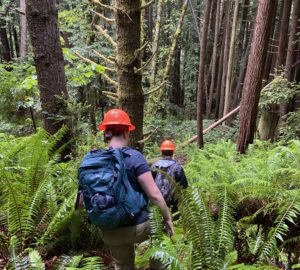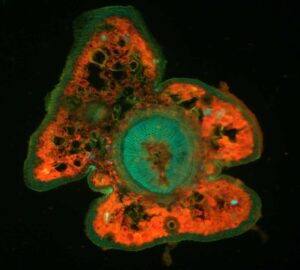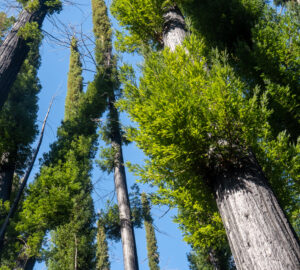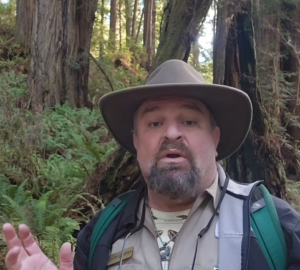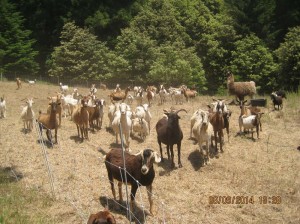
The League’s Cape Vizcaino property is in need of a little TLC. Well, maybe a lot. In a previous blog, I described the problems we have with Douglas fir and tanoak trees encroaching into one of the property’s coastal meadows. A second meadow on the property is impaired in a less visible, yet possibly more profound way: Decades of sheep grazing, and its subsequent abandonment, created the conditions for a prolific crop of bull thistle, an invasive plant native to Europe and Asia. Because it is so unpalatable to the native deer, the thistle quickly came to dominate these abandoned pastures, creating a thicket of nearly impenetrable spikes. Each thistle head contains several seeds, and the problem only worsens with time.
In a situation like this, what is to be done? Were there just a few plants, it might be possible to root them out; but with hundreds of thousands, the task would be a Sisyphean one (the next year’s crop of thistles would appear before the previous year’s were dug up). Mechanical treatments are not an option on the steep, unstable ground here, and the sheep that grazed the property during its recent history are no match for the thick spines of mature thistles.
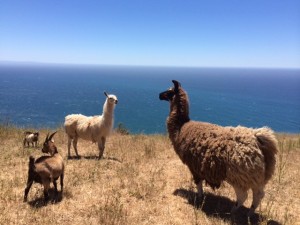
There is, however, another hairy and hungry solution: goats. Unlike sheep, the admirably tough mouths of goats make short work of the stiff spines of the thistles, and the goats’ caustic rumens means that the seeds that come out the other end are not able to germinate and establish. For the past two weeks, eighty goats have been munching their way through the thistle-infested southern meadow. The livestock tenders from Billy’s Mini Farm pen the goats in a confined space, focusing their efforts, and move the pen around the meadow as the thistles are depleted. The goats and their tenders are not alone out there, though — coyotes, bears, and mountain lions abound on the Mendocino coast. To help protect the herd from predators, the goats graze under the watchful eyes of a pair of guard-llamas. While they were extremely friendly toward me, the llamas have kept the entire herd free from predation – not a single goat has been lost!
The goats have been in the meadow for a couple of weeks, and will be there for a couple weeks more. The job will not be done when they leave, however. Despite eating so many of the thistles in the meadow, the thistles will return next year (though not as widespread or dense), and so the goats will need to return. Restoration work is not done in a single stroke; it is the patient task of years, and this is but the first.
Learn more about how and why the League restores redwood forests.



